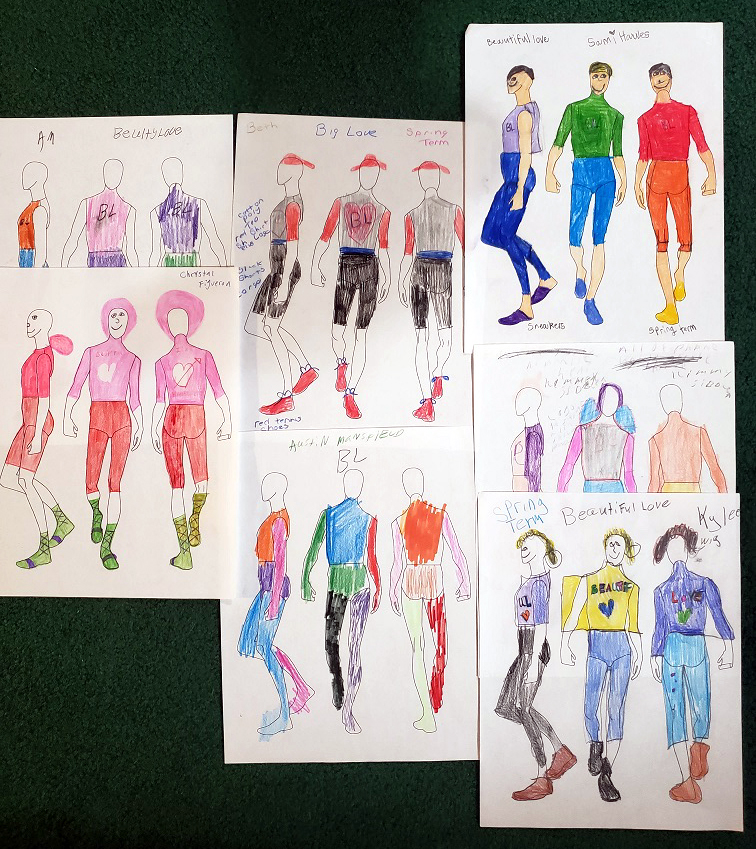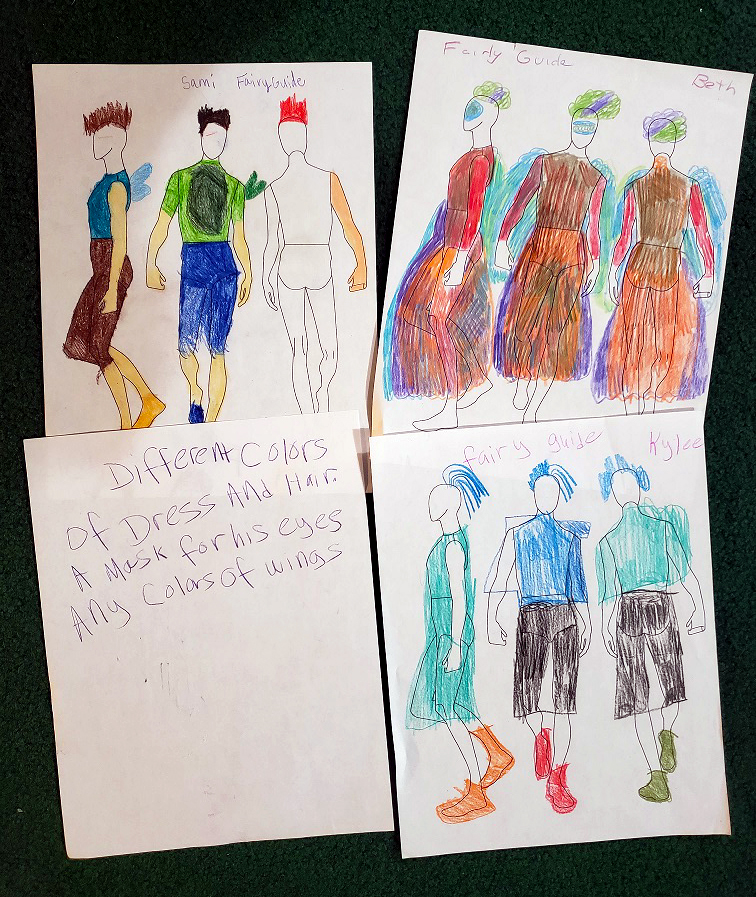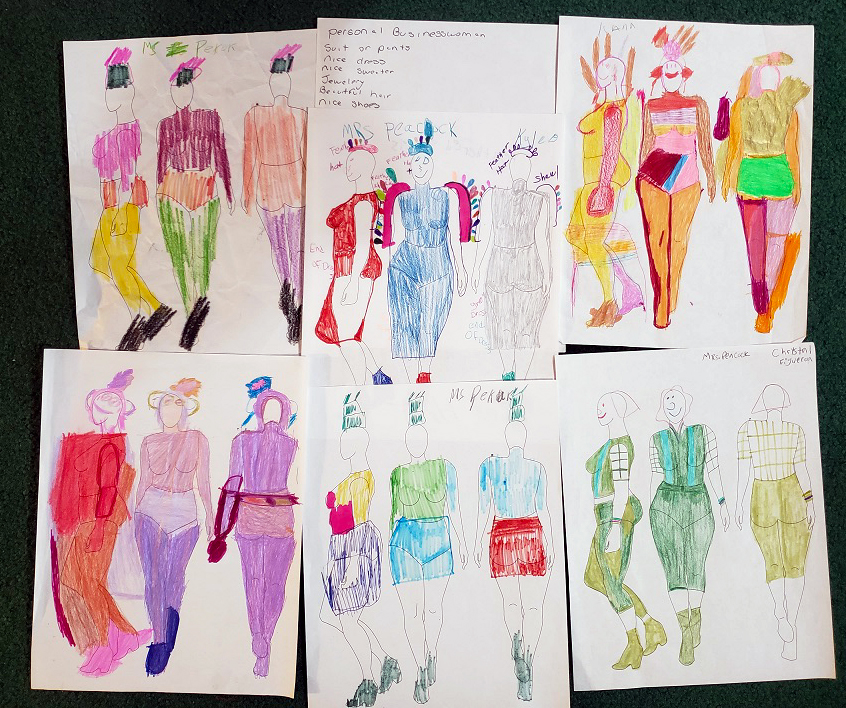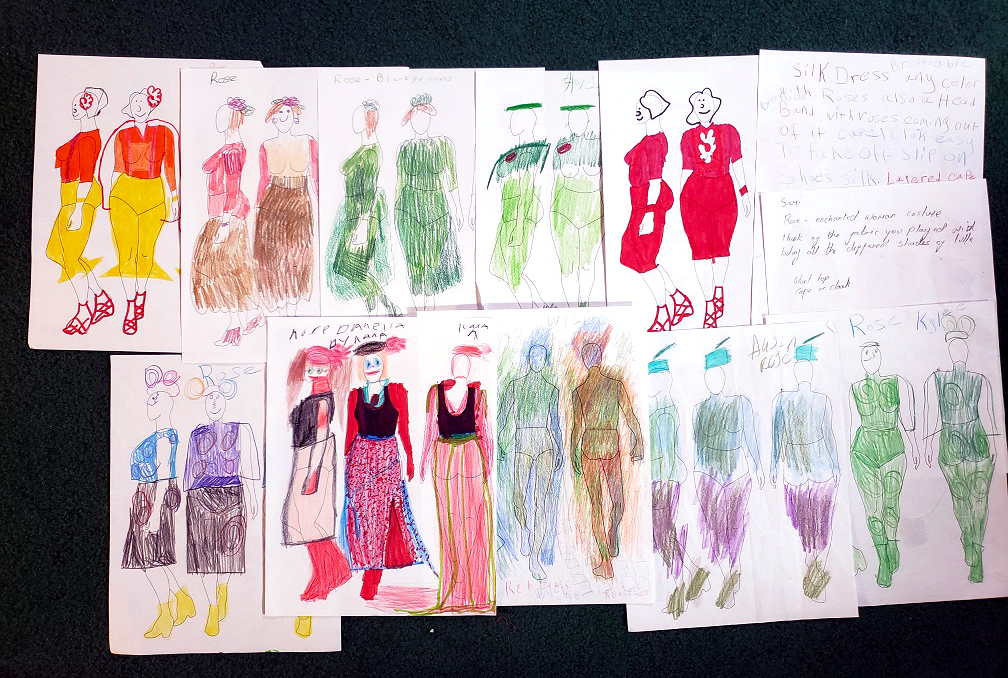Backstage Pass: Costumer Liliane Hunt shares her experience working with students on the rock opera's costume designs
Backstage Pass is a series of blog posts spotlighting PHAME’s production of The Poet’s Shadow, on stage at the Hampton Opera Center this August. Follow us backstage to hear the stories behind the opera, interviews with the cast and crew, and more!
This guest post is written by Liliane Hunt, who taught the costume design class where students designed the costumes for The Poet’s Shadow. A professional costumer by trade, Liliane is currently hard at work creating the costumes for the show.
Liliane Hunt, the costumer for The Poet’s Shadow who worked with PHAME students on the production’s costume designs.
If I had to come up with two adjectives to describe the process of costume designing with the PHAME students for the upcoming production of The Poet’s Shadow, they would be teamwork and professionalism.
From the very beginning the students considered themselves a team, or to be more precise, “The Costume Department.” Everyone in the Department had something essential to bring to the table and it was my job to provide them the space to do that.
We began with research on the various characters within The Poet’s Shadow and how similar characters and archetypes had been costumed previously on both stage and screen. We picked apart what we liked and didn’t like and examined the different requirements of stage costumes versus costumes for film. Also, how we as designers must balance our designs with the needs of the performer and the overall aesthetic and budget of the show itself.
Liliane with The Rose (Anne-Marie Plass) and Mrs. Peacock (Lea Mulligan).
From there the costume sketches were born. We talked about how the characters would feel in these costumes and what it is to embody not only the character as an actor but also what that individual would wear, how they would wear it, and why. The students pulled together their knowledge from the classes on historical fashion and adapting it to work on the stage. The final sketches from each student were accompanied with detailed notes on the specifics of their design choices which I am thrilled to say came from an endless variety of sources.
Austin time and time again demonstrated exceptional leadership skills (an example of which was during a discussion about one of the characters) and offered to go find one of the performers and ask them if they would mind stepping into the classroom and telling us face to face about their needs as a performer. All this was accomplished within two minutes. He identified a need and created a solution.
Kylee brought grit and determination, constantly challenging herself to never take the easy route with a design and to keep on carrying on even when the costume making process became tedious. She never walked away until the job was finished.
Beth brought maturity and insight to the group. Not only could she provide perspective into the characters, but also detail and perfectionism with our creative tasks.
So much of what makes a great costume is not just a dress, a skirt, a jacket, but it is the accessories that make it pop. That gives authenticity to the character, and no student took this to heart more seriously than Kara. She not only dressed the part of a designer for each class, but she inspired the rest of us to “step it up.” It’s no surprise that accessories play a significant role in almost all the principle costumes.
Not only can Sammi draw, which is a useful skill as a designer, but she also earned the title of Miss Congeniality. Even when the clock was ticking to get the designs and creations done on time, there was always a smile and a thank you to myself and her team. Miss Manners herself would have been impressed.






When working on a project that deals with characters that have a fantastical element, you really have to push yourself to think beyond your comfort zone and design with a really fresh approach, and thankfully we had Willie for this. Willie created sketches that you experienced first. His sensory approach to design led you first to the type of textiles that would create that look and then to the next question, “how can we as a class create the costume?”
The final member of our Costume department was Crystal. Her sketching process was highly focused, with every detail precisely considered with a strong and clear vision about the look for each character.
It is a wonderful feeling to witness the students not only create as a team, but to step back and be proud of their accomplishments. Each term the plan was to both learn and create and the Winter term and Spring term students get to see not only costumes they helped design but also a costume they actually made [for The Rose] worn on stage at the Hampton Opera House, quite an accomplishment!
—Liliane Hunt


